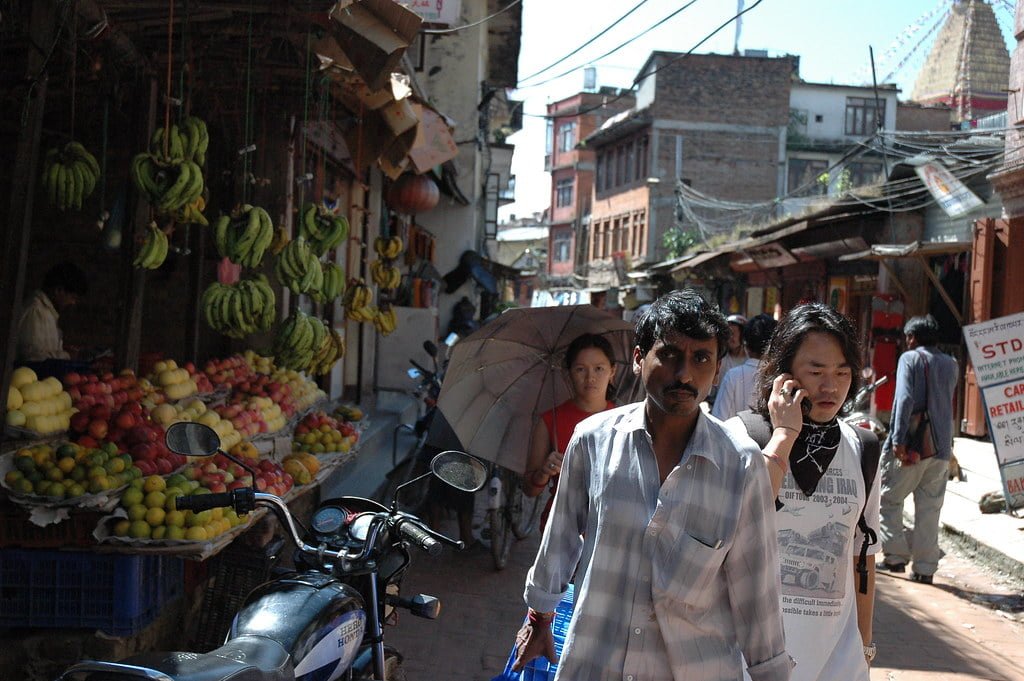What Is the Race of Nepalese People?
When unraveling the intricate threads of Nepalese racial identity, you'll find a colorful tapestry woven with diverse influences and origins. Curious to uncover the intricate web of races that compose the vibrant Nepalese population? Stay tuned to discover the fascinating blend of ethnicities that grace the foothills of the Himalayas.
Ethnic Diversity in Nepal
In Nepal, ethnic diversity flourishes across 125 distinct groups, as revealed by the 2011 national census. This diversity is intricately tied to the country's mountainous terrain, where the harsh conditions and geographic isolation have fostered a rich tapestry of unique identities. The mountain valleys of Nepal, in particular, have been instrumental in shaping distinct ethnic groups due to their isolation from external influences.
Within these ethnic groups, there is a mix of ancestry, with Alpine communities tracing their origins back to Tibeto-Burman, Mongoloid, or Indo-Aryan families. The Sherpas, a well-known Alpine ethnic group in Nepal, are closely linked to Tibetan customs and traditions, showcasing the intricate cultural interplay within the country.
The Indo-Aryan groups in Nepal bring a different cultural flavor compared to the Tibeto-Burman and Mongoloid groups, adding further layers to the country's ethnic diversity. This blend of different ethnicities coexisting within Nepal highlights the country's unique position as a melting pot of cultures and traditions, each contributing to the vibrant tapestry of Nepalese society.
Himalayan Ethnic Groups
Nepal's Himalayan Ethnic Groups, comprising Sherpas, Dolpas, Manangis, Baragaonlis, and Lopas, reside predominantly in the high Himalayan regions, where their unique cultural practices and traditions are intricately shaped by the challenges of high-altitude living. Among these groups, Sherpas are renowned for their connection to mountaineering and the Everest region, embodying a spirit of resilience and strength in the face of extreme conditions. Dolpas, on the other hand, inhabit some of the highest settlements globally, reaching staggering altitudes of up to 20,000 feet, showcasing their adaptation to the harsh mountain environment.
The Manangis, Baragaonlis, and Lopas also contribute to the rich tapestry of Himalayan ethnic diversity, each with distinct customs and beliefs that reflect their high-altitude lifestyle. These communities have evolved practices that are not only influenced by their environment but also deeply rooted in their history and interactions with neighboring groups. From religious rituals to traditional attire, the cultural heritage of these Himalayan ethnic groups serves as a testament to their ability to thrive in some of the most challenging terrains on earth.
In the high Himalayan regions of Nepal, the intricate interplay between geography and culture has given rise to a mosaic of traditions that continue to fascinate and inspire observers worldwide.
Terai Ethnic Communities
Terai Ethnic Communities encompass a diverse array of indigenous groups, including Tharus, Yadavas, Satar, Rajvanshis, and Dhimals, residing predominantly in the southern plains of Nepal. Among these, the Tharus stand out as one of the oldest indigenous ethnic groups in Nepal, boasting a rich cultural heritage that reflects their deep connection to the land. The Terai region serves as a melting pot of various ethnic communities, each contributing to the cultural tapestry of Nepal with their unique linguistic and social characteristics.
The Yadavas, Satar, Rajvanshis, and Dhimals add to the vibrancy of the Terai region with their distinct traditions and customs. Their presence highlights the mosaic of cultures present in Nepal, showcasing the beauty of diversity within the country. The linguistic diversity among these communities further enriches the social fabric of Nepal, creating a harmonious blend of different languages and dialects.
Racial Identities in Nepal
Diverse racial identities characterize the population of Nepal, influenced by centuries of migration and cultural amalgamation. The two primary races in Nepal are the Indo-Aryans and Tibeto-Burmans. Among the various ethnic groups, Kirats and Sherpas play significant roles in shaping the racial landscape of the country. The migration of different ethnic groups to Nepal over the years has led to a rich tapestry of racial identities within the population.
In Nepal, one's caste can often be discerned from their last name, particularly among the Hindu population. Tibeto-Nepalese last names, on the other hand, can indicate their ethnic group, clan, or sub-clan affiliation. These naming conventions provide insights into the diverse racial backgrounds present in Nepalese society.
The interplay of these various racial identities adds depth and complexity to the social fabric of Nepal. Understanding the racial diversity in the country is crucial for appreciating the nuances of its cultural heritage and societal structures. As you delve deeper into the racial identities in Nepal, you will discover a melting pot of influences that have contributed to the unique tapestry of ethnicities that make up the population of this diverse nation.
Caste Systems in Nepalese Society
Within Nepalese society, the hierarchical caste system is intricately structured based on power dynamics and rights allocation. This system divides the population into various castes with distinct social expectations, creating a complex social power hierarchy. Dominant castes hold more privilege, while servant castes have fewer rights and opportunities. Caste in Nepal is closely intertwined with ethnicity, contributing to the diversity of the social structure. The largest ethnic group, the Chhettris, accounts for approximately 16% of the population, highlighting the absence of a clear majority ethnic group in Nepal.
The caste system in Nepal plays a significant role in shaping social interactions and opportunities. It influences access to resources, education, employment, and even marriage prospects. Those in dominant castes often enjoy more social and economic advantages, perpetuating inequality within Nepalese society. This system of social stratification reflects historical traditions and continues to impact the lives of individuals across various castes.
Despite efforts to address caste-based discrimination and promote equality, the caste system remains a fundamental aspect of Nepalese society. Understanding the complexities of this system is crucial for appreciating the nuances of social dynamics and working towards a more inclusive and equitable society for all Nepalese people.

